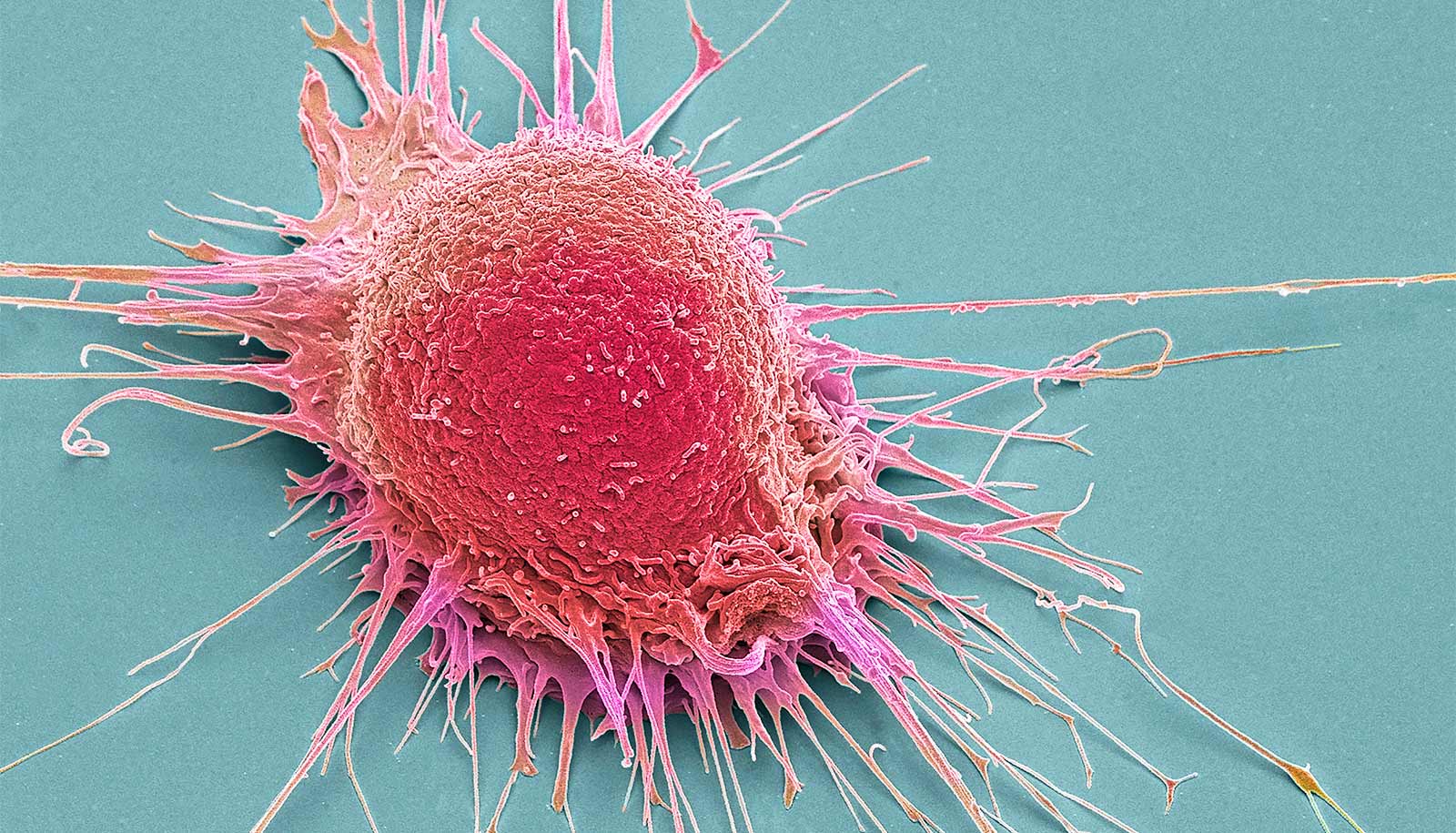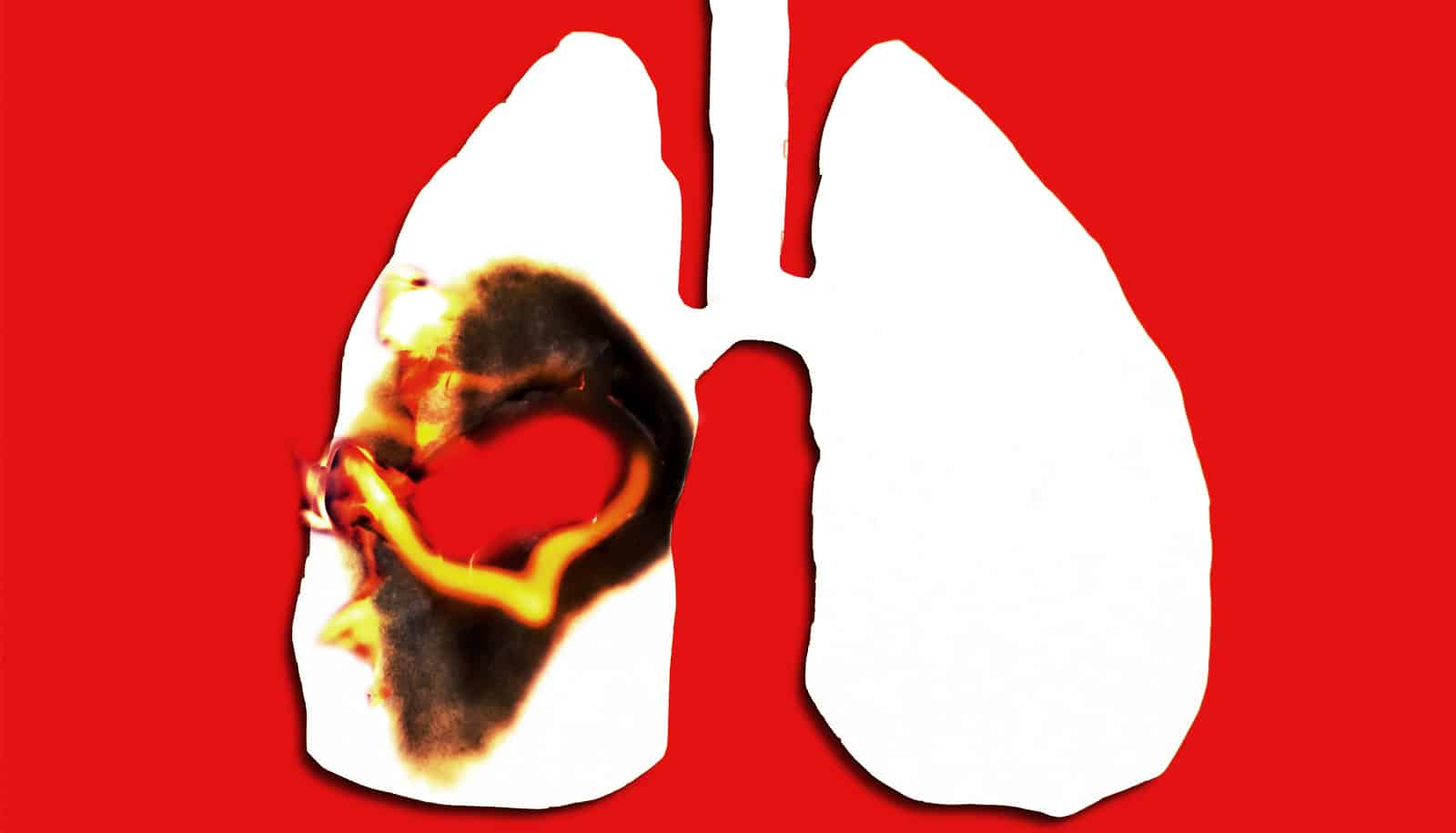Research finds that certain small RNA molecules can trigger a mechanism hidden in every cell that forces it to self-destruct. This failsafe may protect us from cancer.
“This could be a major breakthrough…”
The mechanism could potentially become a novel form of cancer therapy, the study authors say.
Cancer cells treated with the RNA molecules never develop resistance to them because they simultaneously eliminate multiple genes that cancer cells need for survival.
“It’s like committing suicide by stabbing yourself, shooting yourself, and jumping off a building all at the same time,” says lead study author Marcus Peter, a professor of cancer metabolism at Northwestern University’s Feinberg School of Medicine. “You cannot survive.”
The inability of cancer cells to develop resistance to the molecules is a first, Peter says. “This could be a major breakthrough.”
Ancient failsafe
Peter and his team discovered sequences in the human genome that, when converted into small double-stranded RNA molecules, trigger what they believe to be an ancient kill switch in cells to prevent cancer. He has been searching for the phantom molecules with this activity for eight years.
“We think this is how multicellular organisms eliminated cancer before the development of the adaptive immune system, which is about 500 million years old,” he says. “It could be a failsafe that forces rogue cells to commit suicide. We believe it is active in every cell protecting us from cancer.”
This study, which will appear October 24 in the journal eLife, as well as two other studies—one in Oncotarget and the other in Cell Cycle—describe the discovery of the assassin molecules present in multiple human genes and their powerful effect on cancer in mice.
Why are these molecules so powerful?
“Ever since life became multicellular, which could be more than two billion years ago, it had to deal with preventing or fighting cancer,” Peter says. “So nature must have developed a failsafe mechanism to prevent cancer or fight it the moment it forms. Otherwise, we wouldn’t still be here.”
Thus began his search for natural molecules coded in the genome that kill cancer.
‘Needle in a haystack’
“We knew they would be very hard to find,” Peter says. “The kill mechanism would only be active in a single cell the moment it becomes cancerous. It was a needle in a haystack.”
But he found them by testing a class of small RNAs, called small interfering (si)RNAs, scientists use to suppress gene activity. siRNAs are designed by taking short sequences of the gene to be targeted and converting them into double-stranded RNA. When researchers introduce them into cells, these siRNAs suppress the expression of the gene they are derived from.
Peter found that a large number of these small RNAs derived from certain genes did not, as expected, only suppress the gene they were designed against. They also killed all cancer cells. His team discovered these special sequences are distributed throughout the human genome, embedded in multiple genes, as the researchers show in Cell Cycle.
Protein that enables and kills cancer could be new target
When converted to siRNAs, these sequences all act as highly trained super assassins. They kill the cells by simultaneously eliminating the genes required for cell survival. By taking out these survivor genes, the assassin molecule activates multiple death cell pathways in parallel.
The small RNA assassin molecules trigger a mechanism Peter calls DISE, for Death Induced by Survival gene Elimination.
Activating DISE in organisms with cancer might eliminate cancer cells. Peter’s group has evidence this form of cell death preferentially affects cancer cells with little effect on normal cells.
To test this in a treatment situation, Peter collaborated with Shad Thaxton, an associate professor of urology at the university, to deliver the assassin molecules via nanoparticles to mice bearing human ovarian cancer.
In the treated mice, the treatment strongly reduced the tumor growth with no toxicity to the mice, the researchers report in the study in Oncotarget. Importantly, the tumors did not develop resistance to this form of cancer treatment. Peter and Thaxton are now refining the treatment to increase its efficacy.
Pushing past frustration
Peter has long been frustrated with the lack of progress in solid cancer treatment.
“The problem is cancer cells are so diverse that even though the drugs, designed to target single cancer driving genes, often initially are effective, they eventually stop working and patients succumb to the disease,” Peter says. He thinks a number of cancer cell subsets are never really affected by most targeted anticancer drugs currently used.
Most of the advanced solid cancers such as brain, lung, pancreatic, or ovarian cancer have not seen an improvement in survival, Peter says.
“If you had an aggressive, metastasizing form of the disease 50 years ago, you were busted back then and you are still busted today,” he says. “Improvements are often due to better detection methods and not to better treatments.”
‘Labyrinth’ chip splits cancer cells from blood for testing
Cancer scientists need to listen to nature more, Peter says. Immune therapy has been a success, he notes, because it is aimed at activating an anticancer mechanism that evolution developed. Unfortunately, few cancers respond to immune therapy and only a few patients with these cancers benefit, he says.
“Our research may be tapping into one of nature’s original kill switches, and we hope the impact will affect many cancers,” he says. “Our findings could be disruptive.”
The National Cancer Institute of the National Institutes of Health funded the research.
Source: Northwestern University



